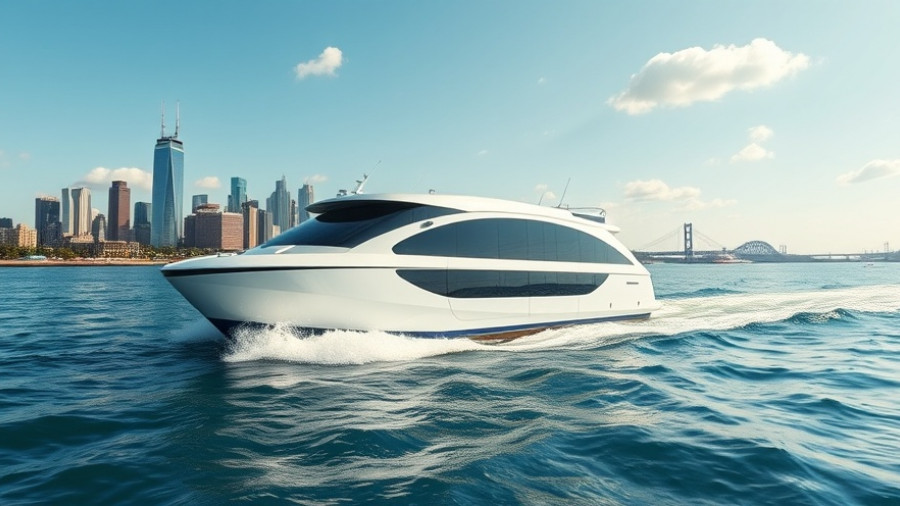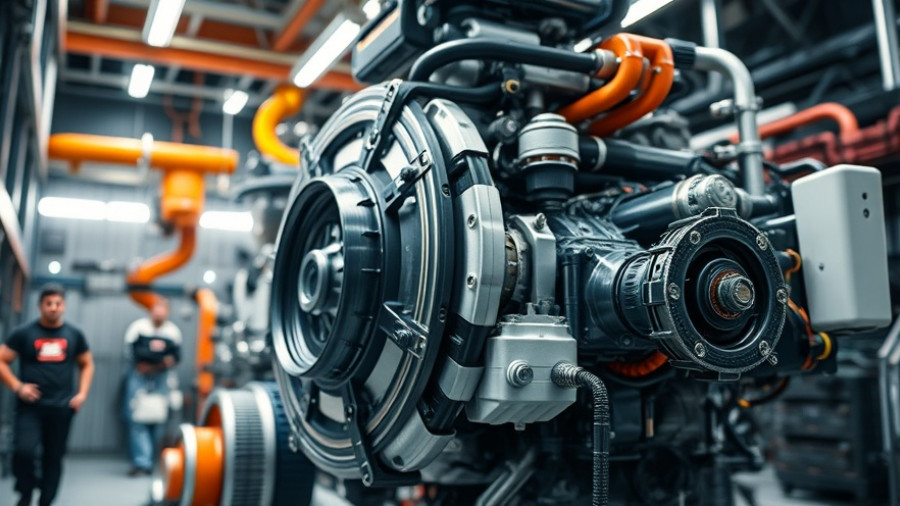
Introducing Elogrid: A New Era for Energy Efficiency in Maritime
Elomatic, a Finnish engineering company, has ushered in a transformative phase for maritime technology with the launch of its patented Elogrid tunnel thruster system. Recently, installation was completed on the Meteor IV, a specialized research vessel designed to bolster climate and environmental studies for the German Federal Ministry of Education and Research. This innovative technology optimally maximizes side thrust force, enhancing vessel maneuverability and efficiency while delivering a minimum fuel consumption reduction of 1% to 4% under standard operating conditions.
Understanding Elogrid's Impact on Fuel Efficiency
The Elogrid technology is built around advanced design principles that reduce water flow entering the bow thruster tunnels. By streamlining this flow, the system significantly boosts the thrust produced by tunnel propellers, achieving a remarkable increase in efficiency by approximately 5-8%. This enhancement not only supports superior maneuverability but also promises considerable fuel savings.
The Meteor IV Project: A Case Study in Innovation
Constructed by the Meyer Group and Fassmer under a joint venture, the Meteor IV is pioneering the integration of Elogrid technology into newbuild projects. This collaborative effort serves as a blueprint for future vessel designs, demonstrating how sustainable practices can be systematically embedded in maritime engineering.
Diverse Perspectives: The Industry's Shift Towards Sustainability
Experts, including Jari Yli-Tolppa of Elomatic, highlight that projects like the Meteor IV exemplify the serious commitment of shipbuilders and owners toward enhancing ship performance while concurrently reducing environmental footprints. Jan Oskar Henkel of Fassmer echoes this sentiment, asserting that their collaboration with Elomatic has allowed them to fulfill specific performance requirements, demonstrating that sustainability and operational efficiency can indeed go hand-in-hand.
Future Predictions: The Horizon for Energy-Saving Technologies in Shipping
As global shipping faces increasing pressure to reduce carbon emissions, innovations like the Elogrid tunnel thruster stand at the forefront of industry transformation. Experts predict an accelerated adoption of similar technologies across various fleets, especially in sectors where operational efficiency is integral to mission success.
Practical Insights: What This Means for Shipowners
For shipowners, the Elogrid technology represents not only a means of cost savings through fuel reduction but also a strategic pathway to meeting regulatory requirements regarding emissions. Implementing energy-efficient systems can build a competitive advantage, enhancing the sustainability image and overall brand value within an industry that is continually evolving.
Conclusion: Embracing Change in Maritime Technology
The successful installation of Elomatic's Elogrid system on the Meteor IV signals a significant market shift towards greener and more efficient ship design practices. As we see the Elogrid concept gain traction, it lays down a legacy of innovation that can inspire future projects to prioritize environmental responsibility alongside performance. Shipowners are encouraged to engage with technology advancements that can lead to operational excellence while contributing positively to the planet's health.
 Add Row
Add Row  Add
Add 




Write A Comment